Text
just like going through the members of my family and my friend groups one by one, i can't think a single damn person i know who does not have a disability. ARFID. Autism. Metal rod in the spine. Arthritis. Cancer in remission. Long-term effects of repeated concussions. Bad back. Exhaustion. Crohn's. EDS. More Autism and ADHD. Migraines. Periods that lay them out for a week. Chronic depression. Alcoholism. Bipolar. Cataracts.
I do not know a single person who is not disabled, typically in multiple ways, and we all face increased disability as a natural consequence of aging. Literally every person on the planet becomes disabled on a long enough timeline. Yet we still talk about disability and organize around it as if it isn't social, economic, and contextual. people treat disability as an innate quality that some people have and some people do not have, and as if there is some large class of intrinsically abled people who are benefiting under capitalism and are withholding the fruits of their abilities from us or something.
i saw this post on twitter months ago that was like "I need people to understand that if you are in a relationship with a disabled person you are going to have to do more than them. you're not disabled and so you're going to have to do more of the work (around the house, logisticially, etc). that is what you owe them as an abled person."
and it just baffled me. because i have only ever seen disabled people in relationships with other disabled people, caring for one another in a stitched-together, messy web of interdependence and missed deadlines and dirty dishes and acceptance and love, not because disabled people are ontologically more generous than non-disabled people but because non-disabled people don't even actually exist.
the mythological abled person who can work a full time job, keep a clean home, do all the dishes, buy all the groceries, cook all the meals, run all the errands, stay on top of all the bills, carry everything, dash up the stairs, stand on their feet for hours, and have boundless energy without any mental consequences to that does not exist. it's an ideal created to oppress us all. it is an impossible standard the reification of which disables us all.
there is no one on this planet who is not disabled under capitalism and colonialism. there are only people who lack the class consciousness to recognize that they're disabled.
it's gonna have to be us taking care of one another. it's going to be the disabled caring for the disabled. it always will be that. that is the human condition.
229 notes
·
View notes
Text
the guy in question is an operator at the CHESS particle accelerator and I think this should be required reading for anyone who tells me I must be so smart when I say I'm a physics major
Reading the experience of someone who ate a destroying angel mushroom and lived on the Cornell Mushroom blog and yeah, he sounds exactly like the kind of guy who would eat a destroying angel mushroom.
49 notes
·
View notes
Photo


Masato 55 - Sea of Clouds Under Mt. Tate and Mt. Tsurugi (2011)
187K notes
·
View notes
Text
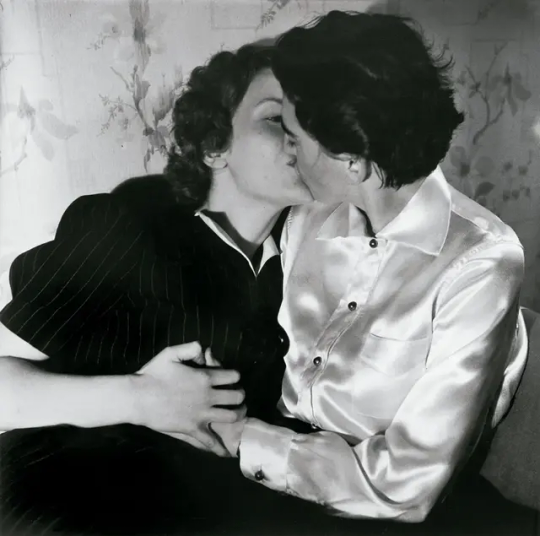
"TWO WOMEN IN LOVE"
JOHN GUTMANN // 1937
[gelatin silver print | 19.6 × 19.7 cm.]
1K notes
·
View notes
Photo



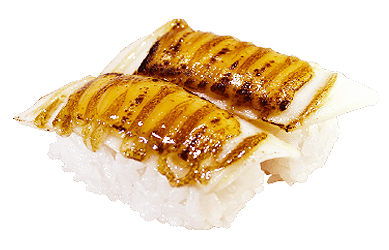
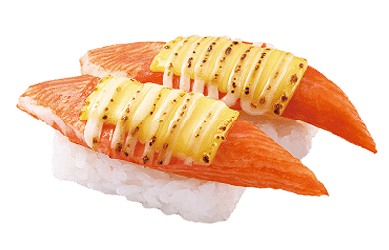
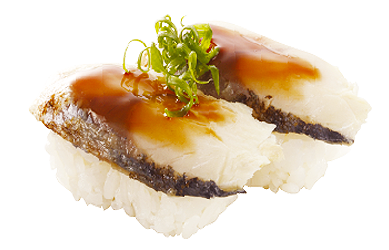
SUSHI EXPRESS: 握壽司
蒲燒鯛魚 // 章魚 // 北魷
起士代鮑 // 起士蟹風味棒 // 醋烤鯖魚
1K notes
·
View notes
Text
What does life in North Korea look like outside of Pyongyang? 🇰🇵
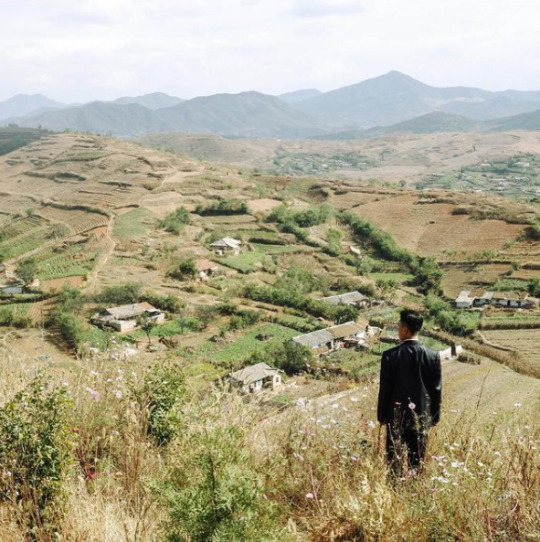
Hey, I'm back again with a very scary "tankie" post that asks you to think of North Koreans as people, and to consider their country not as a cartoonish dystopia, but as a nation that, like any other place on earth, has culture, traditions, and history.
Below is a collection of pictures from various cities and places in North Korea, along with a brief dive into some of the historical events that informs life in the so-called "hermit kingdom."
Warning: very long post
Kaesong, the historic city
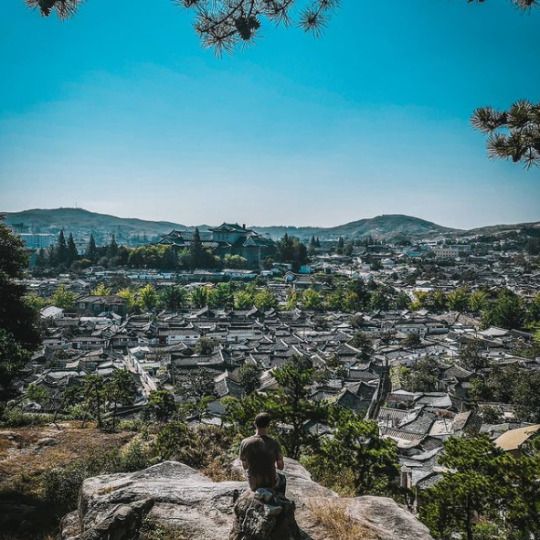
Beginning this post with Kaesong, one of the oldest cities in Korea. It's also one of the few major cities in the DPRK (i.e. "North Korea") that was not completely destroyed during the Korean war.
Every single city you'll see from this point on were victims of intense aerial bombardments from the U.S. and its allies, and had to be either partially or completely rebuilt after the war.
From 1951 to 1953, during what has now become known as the "forgotten war" in the West, the U.S. dropped 635,000 tons of bombs over Korea — most of it in the North, and on civilian population centers. An additional 32,000 tons of napalm was also deployed, engulfing whole cities in fire and inflicting people with horrific burns:
For such a simple thing to make, napalm had horrific human consequences. A bit of liquid fire, a sort of jellied gasoline, napalm clung to human skin on contact and melted off the flesh. Witnesses to napalm's impact described eyelids so burned they could not be shut and flesh that looked like "swollen, raw meat." - PBS
Ever wondered why North Koreans seem to hate the U.S so much? Well...
Keep in mind that only a few years prior to this, the U.S. had, as the first and only country in the world, used the atomic bomb as a weapon of war. Consider, too, the proximity between Japan and Korea — both geographically and as an "Other" in the Western imagination.
As the war dragged on, and it became clear the U.S. and its allies would not "win" in any conventional sense, the fear that the U.S. would resort to nuclear weapons again loomed large, adding another frightening dimension to the war that can probably go a long way in explaining the DPRK's later obsession with acquiring their own nuclear bomb.
But even without the use of nuclear weapons, the indiscriminate attack on civilians, particularly from U.S. saturation bombings, was still horrific:
"The number of Korean dead, injured or missing by war’s end approached three million, ten percent of the overall population. The majority of those killed were in the North, which had half of the population of the South; although the DPRK does not have official figures, possibly twelve to fifteen percent of the population was killed in the war, a figure close to or surpassing the proportion of Soviet citizens killed in World War II" - Charles K. Armstrong
On top of the loss of life, there's also the material damage. By the end of the war, the U.S. Air Force had, by its own estimations, destroyed somewhere around 85% of all buildings in the DPRK, leaving most cities in complete ruin. There are even stories of U.S. bombers dropping their loads into the ocean because they couldn't find any visible targets to bomb.
What you'll see below of Kaesong, then, provides both a rare glimpse of what life in North Korea looked like before the war, and a reminder of what was destroyed.

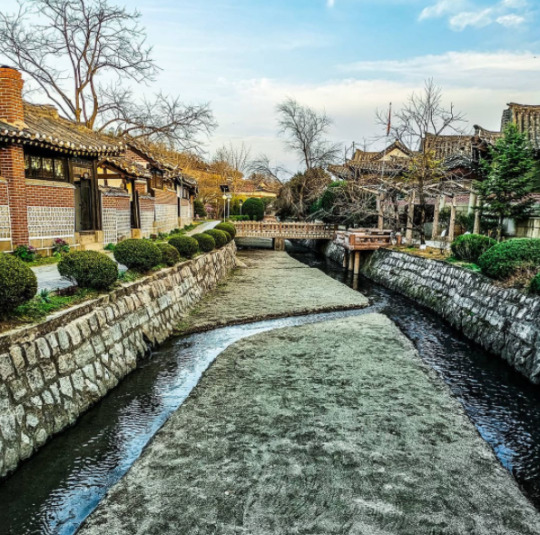

Kaesong's main street, pictured below.
Due the stifling sanctions imposed on the DPRK—which has, in various forms and intensities, been in effect since the 1950s—car ownership is still low throughout the country, with most people getting around either by walking or biking, or by bus or train for longer distances.
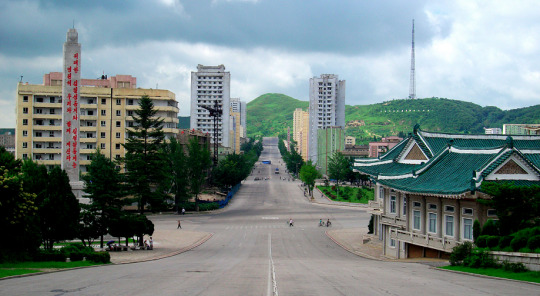
Kaesong, which is regarded as an educational center, is also notable for its many Koryŏ-era monuments. A group of twelve such sites were granted UNESCO world heritage status in 2013.
Included is the Hyonjongnung Royal Tomb, a 14th-century mausoleum located just outside the city of Kaesong.
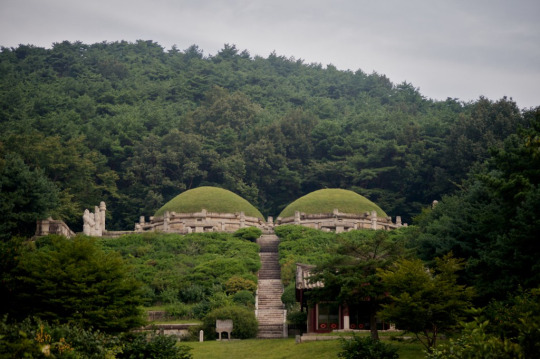
One of the statues guarding the tomb.
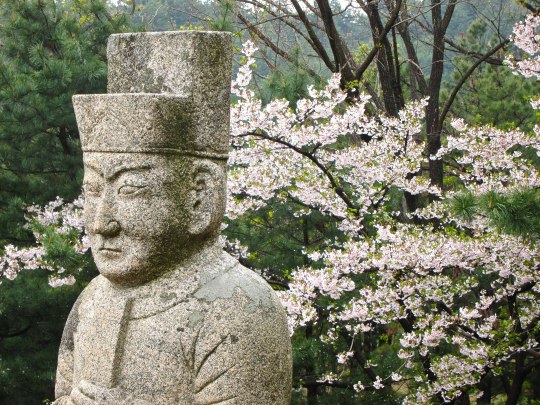
Before moving on the other cities, I also wanted to showcase one more of the DPRK's historical sites: Pohyonsa, a thousand-year-old Buddhist temple complex located in the Myohyang Mountains.

Like many of DPRK's historic sites, the temple complex suffered extensive damage during the Korean war, with the U.S. led bombings destroying over half of its 24 pre-war buildings.
The complex has since been restored and is in use today both as a residence for Buddhist monks, and as a historic site open to visitors.


Hamhung, the second largest city in the DPRK.
A coastal city located in the South Hamgyŏng Province. It has long served as a major industrial hub in the DPRK, and has one of the largest and busiest ports in the country.
Hamhung, like most of the coastal cities in the DPRK, was hit particularly hard during the war. Through relentless aerial bombardments, the US and its allies destroyed somewhere around 80-90% percent of all buildings, roads, and other infrastructure in the city.
Now, more than seventy years later, unexploded bombs, mortars and pieces of live ammunition are still being unearthed by the thousands in the area. As recently as 2016, one of North Korea's bomb squads—there's one in every province, faced with the same cleanup task—retrieved 370 unexploded mortar rounds... from an elementary school playground.
Experts in the DPRK estimate it will probably take over a hundred years to clean up all the unexploded ordnance—and that's just in and around Hamhung.
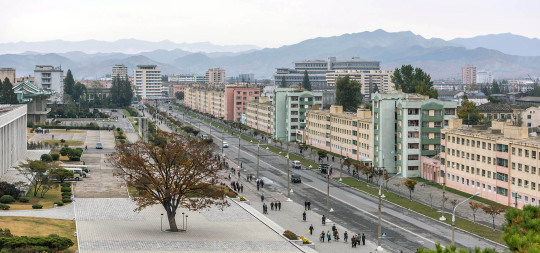

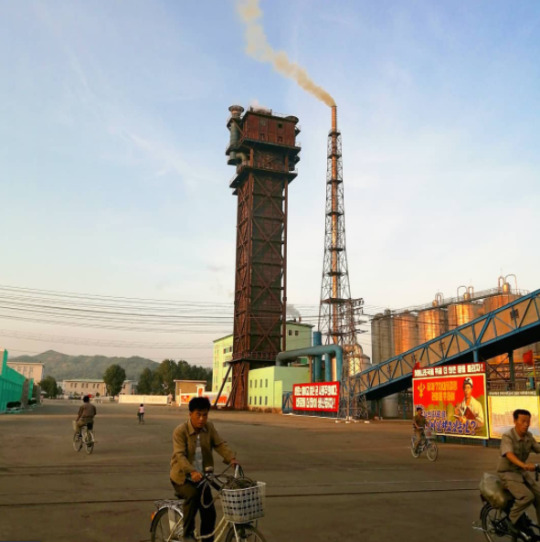
Hamhung's fertilizer plant, the biggest in North Korea.
When the war broke out, Hamhung was home to the largest nitrogen fertilizer plant in Asia. Since its product could be used in the creation of explosives, the existence of the plant is considered to have made Hamhung a target for U.S. aggression (though it's worth repeating that the U.S. carried out saturation bombings of most population centers in the country, irrespective of any so-called 'military value').
The plant was immediately rebuilt after the war, and—beyond its practical use—serves now as a monument of resistance to U.S. imperialism, and as a functional and symbolic site of self-reliance.
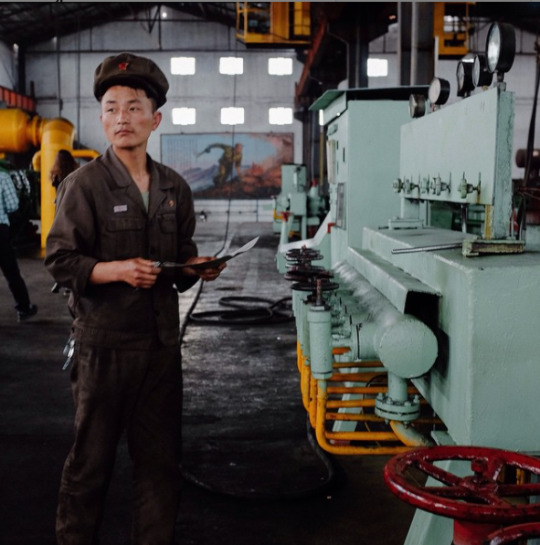
Chongjin, the third largest city in the DPRK.
Another coastal city and industrial hub. It underwent a massive development prior to the Korean war, housing around 300,000 people by the time the war broke out.
By 1953, the U.S. had destroyed most of Chongjin's industry, bombed its harbors, and killed one third of the population.
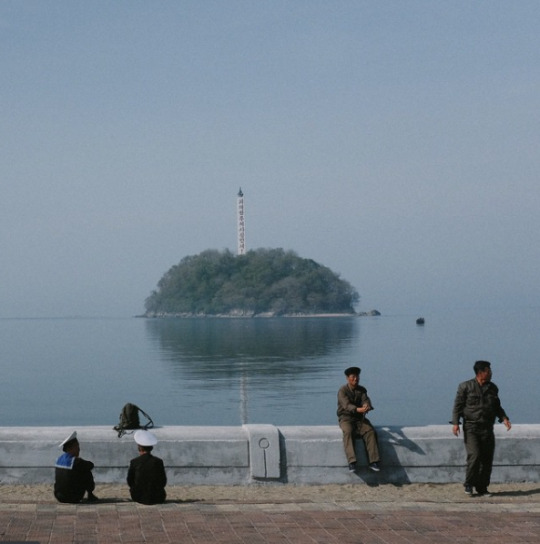
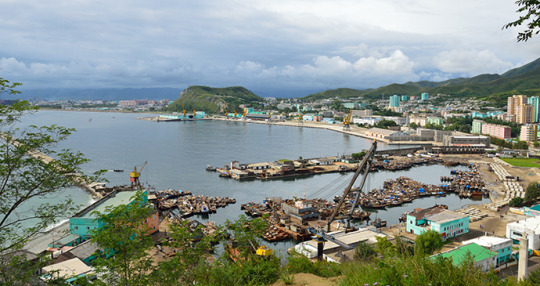

Wonsan, a rebuilt seaside city.
The city of Wonsan is a vital link between the DPRK's east and west coasts, and acts today as both a popular holiday destination for North Koreans, and as a central location for the country's growing tourism industry.
Considered a strategically important location during the war, Wonsan is notable for having endured one of the longest naval blockades in modern history, lasting a total of 861 days.
By the end of the war, the U.S. estimated that they had destroyed around 80% of the city.
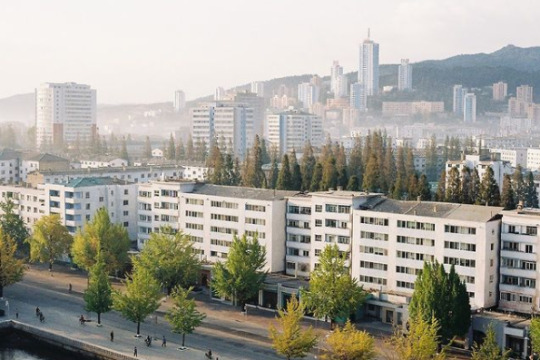

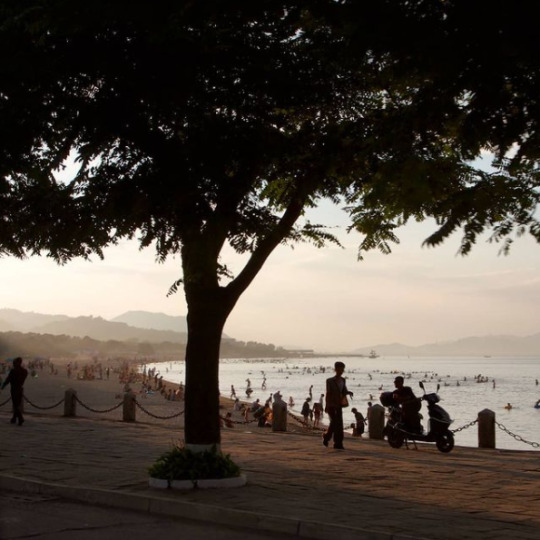

Masikryong Ski Resort, located close to Wonsan. It opened to the public in 2014 and is the first, I believe, that was built with foreign tourists in mind.
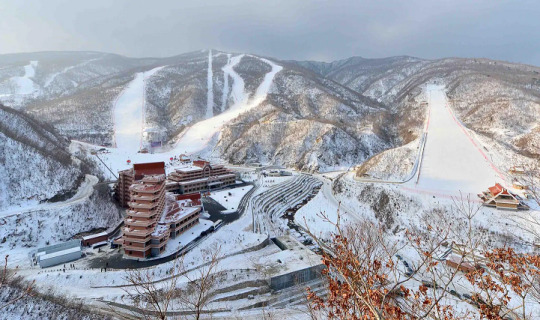
Sariwon, another rebuilt city
One of the worst hit cities during the Korean War, with an estimated destruction level of 95%.
I've written about its Wikipedia page here before, which used to mockingly describe its 'folk customs street'—a project built to preserve old Korean traditions and customs—as an "inaccurate romanticized recreation of an ancient Korean street."
No mention, of course, of the destruction caused by the US-led aerial bombings, or any historical context at all that could possibly even hint at why the preservation of old traditions might be particularly important for the city.
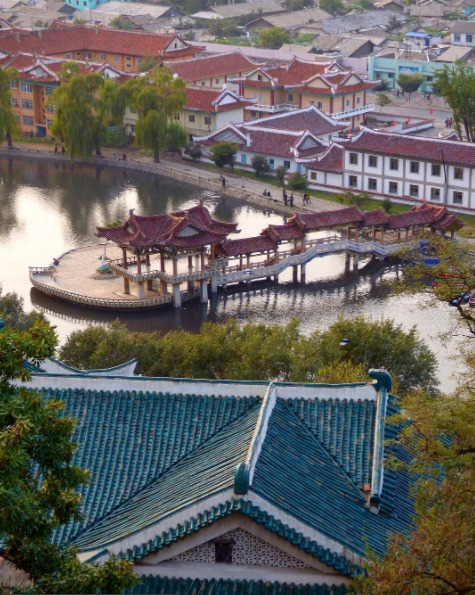

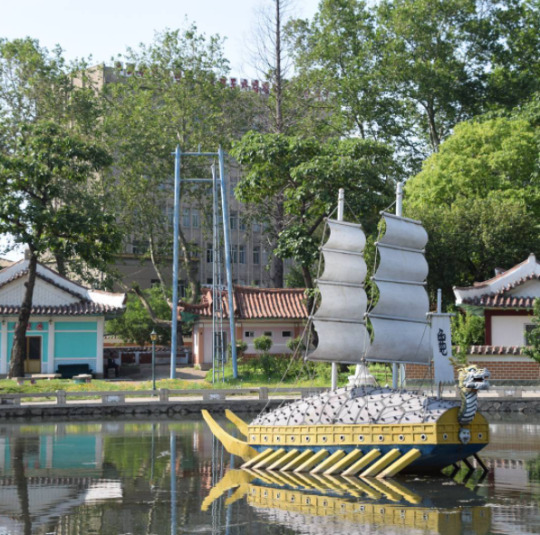
Life outside of the towns and cities
In the rural parts of the DPRK, life primarily revolves around agriculture. As the sanctions they're under make it difficult to acquire fuel, farming in the DPRK relies heavily on manual labour, which again, to avoid food shortages, requires that a large portion of the labour force resides in the countryside.
Unlike what many may think, the reliance on manual labour in farming is a relatively "new" development. Up until the crisis of the 1990s, the DPRK was a highly industrialized nation, with a modernized agricultural system and a high urbanization rate. But, as the access to cheap fuel from the USSR and China disappeared, and the sanctions placed upon them by Western nations heavily restricted their ability to import fuel from other sources, having a fuel-dependent agricultural industry became a recipe for disaster, and required an immediate and brutal restructuring.
For a more detailed breakdown of what lead to the crisis in the 90s, and how it reshaped the DPRKs approach to agriculture, check out this article by Zhun Xu.

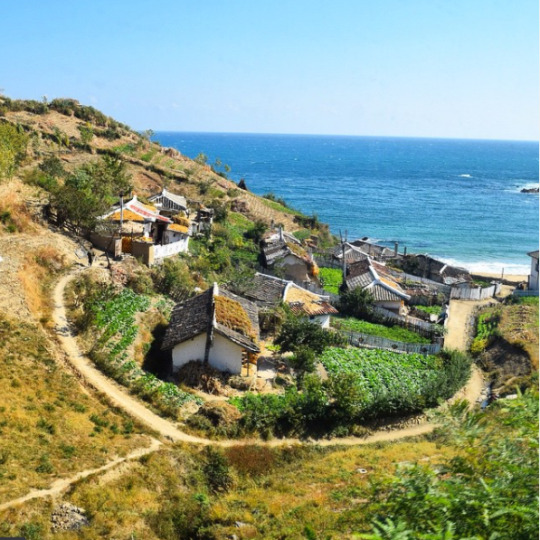
Some typical newly built rural housing, surrounded by farmland.
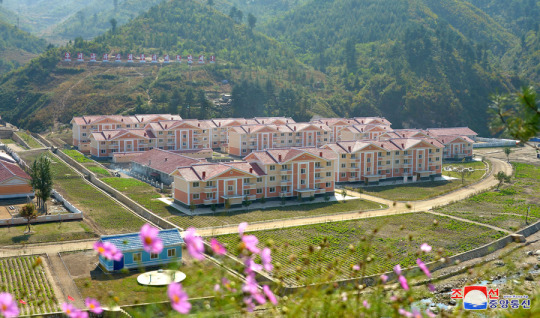
Tumblr only allows 20 pictures per post, but if you want to see more pictures of life outside Pyongyang, check out this imgur album.
5K notes
·
View notes
Text
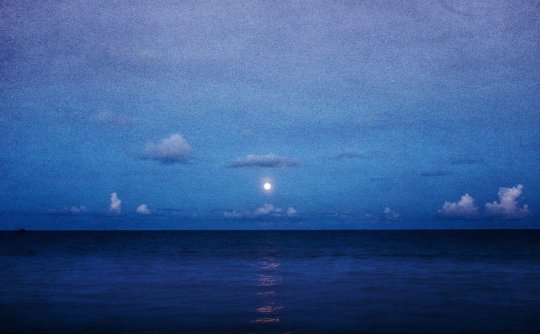

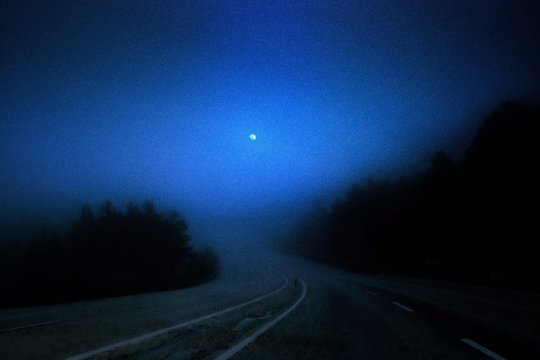


Vijay Sarathy aka Canvasoul (Indian, b. 1995, Chennai, India, based in the Himalayas) - Photography
2K notes
·
View notes
Text
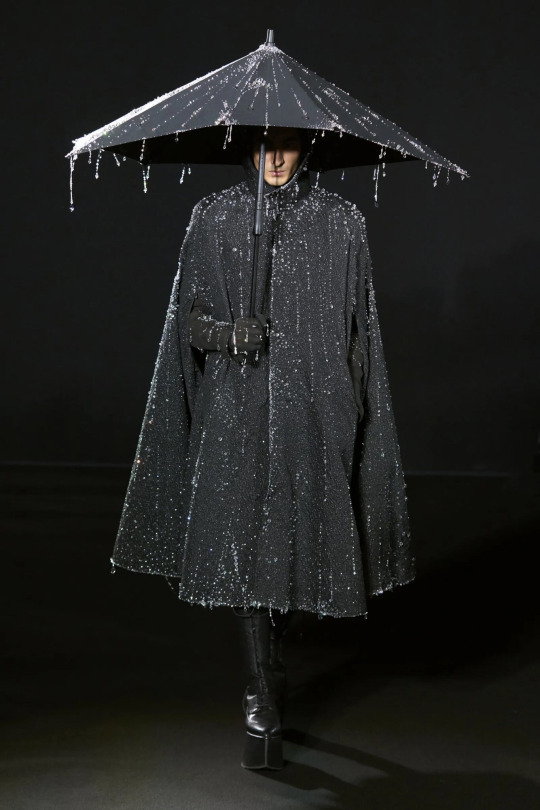

Robert Wun Couture Spring/Summer 2023
"The Raincoat" is Hand crafted with 30,000 Swarovski crystals, and took over 600 hours to construct. Designed to emulate rain droplets sparkling on a dark rainy night.
34K notes
·
View notes
Text
After severing ties with Israel, Colombia's president announced it will open an embassy in Ramallah, Palestine.
Colombia's President Gustavo Petro has ordered the opening of an embassy in the Palestinian city of Ramallah, foreign minister Luis Gilberto Murillo told journalists on Wednesday.
At the beginning of this month, Petro, who has heavily criticized Israeli Prime Minister Benjamin Netanyahu and requested to join South Africa's case accusing Israel of genocide at the International Court of Justice, said he would cut diplomatic relations with Israel over its actions in Gaza.
"President Petro has given the order that we open the Colombian embassy in Ramallah, the representation of Colombia in Ramallah, that is the next step we are going to take," Murillo said.
Ramallah serves as the administrative capital of the Palestinian state.
961 notes
·
View notes
Text
hi, my name is neri, and I am a brazilian astrophysicist currently in grad school. i was affected by the recent floods in southern brazil and had to temporarily leave my home. fortunately, I was able to reach my parents' house in my hometown.
now that conditions are improving, i plan to return home. however, plane tickets are quite expensive on short notice, and with the porto alegre airport out of service due to flooding, I'll also need to take a bus.
the total cost for my travel is approximately 770 reais (about 150 USD). i would greatly appreciate it if you could share this post, and any donation to help cover these expenses would be incredibly helpful. i'm leaving my kofi below.
thank you so much for your support!
214 notes
·
View notes
Text
Genuinely cannot begin to fathom what postpartum is like in Gaza. I was beyond blessed to have doctors and nurses present and I still suffered so much not only during labour but afterwards, and for months and months after. I cannot imagine doing that while also trying to survive genocide. Literally cannot imagine going through postpartum in a tent. I cannot imagine having to heal after giving birth in the heat of the summer with no electricity or a sip of cold, clean water. The fact that most mothers are malnourished and maternity care is almost nonexistent because of Israel is devastating to just think about. And I'm sure most of the care items needed postpartum are unavailable due to the blockade and to Zionist lunatics preventing aid from getting in.
I shared these campaigns earlier and I couldn't stop thinking about them since, please share/donate to expecting families and to families with newborns and DM me any campaigns that you come across of expecting families please.
8K notes
·
View notes
Text

Kim Jongsook ‘김종숙’ (b. 1968, South Korea) - from Artificial Landscape series, Mixed Media on Canvas, made with Swarovski’s Cut Crystals (2012)
6K notes
·
View notes
Text
A settler organized in a militia killed a Kanak protesting for liberation from French colonialism in Kanaky.
They are trying to minimize it by saying (without proper investigation) that the settler was defending himself and calling him a “civilian” as well as by calling the Kanak man a “rioter”. The high commissioner also announced that if “calm” doesn’t come back he will organize a military intervention to bring back “peace” and “calm”. For the record there’s already a lot of military checkpoints (edit: I used the expression military checkpoint but it’s not the right one I’m talking about the control by the gendarmerie who are like cops except they are in the military) that Kanak people have to go through daily in certain area and a heavy military presence so when he is talking about military intervention he is talking about killing people.
Article (in French)
This is all happening because France wants to accelerate the colonization of Kanaky by allowing every single white French adult the right to vote locally. The Kanak resistance managed to negotiate so only settlers who had been in Kanaky for a decade or more in 1998 could vote locally. New settlers cannot do it. And France and its settlers want to go back on that accord saying that the 2021 referendum shows that people don’t want liberation so it’s racist (against settlers) to not let them vote (and take over Kanaky completely)
If any piece of shit brings up the 2021 referendum as a justification of French colonialism in Kanaky, know that it has zero value. The Kanak people and the resistance called for a report of the vote because of COVID. Mentioning that not only there was a health risk but that Kanak people have a long grieving period which meant that they wouldn’t be able to vote. That vote ended up being only a settler vote. If you compare it to the two previous votes with higher participation rate it’s almost certain that the Yes to independence would have won.
For those who don’t know it international law recognize Kanaky as a colony. The UN has Kanaky on the list of territories where indigenous people have no right to self determination and they recognize France as the occupying power (thanks to Palestine we’ve seen that international law doesn’t apply to Western backed colonialism but that’s an other topic)
636 notes
·
View notes
Text

There are no borders in this struggle to the death. We cannot be indifferent to what happens anywhere in the world, because a victory by any country over imperialism is our victory, just as any country's defeat is a defeat for all of us.
Che Guevara, at the Afro-Asian Conference in Algeria, February 24, 1965
265 notes
·
View notes
Text

Cristi Rinklin - To Be Determined, 2024 - Oil and acryllic on aluminum
197 notes
·
View notes
Text
“So you plant your own garden and decorate your own soul, instead of waiting for someone to bring you flowers.”
— Jorge Luis Borges, After a While
650 notes
·
View notes
Text
Good morning, you have to be the thing that saves you
39K notes
·
View notes